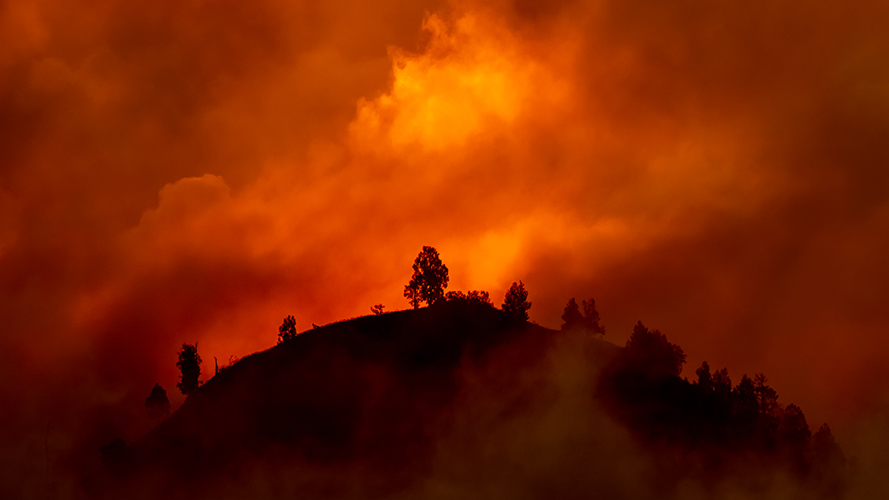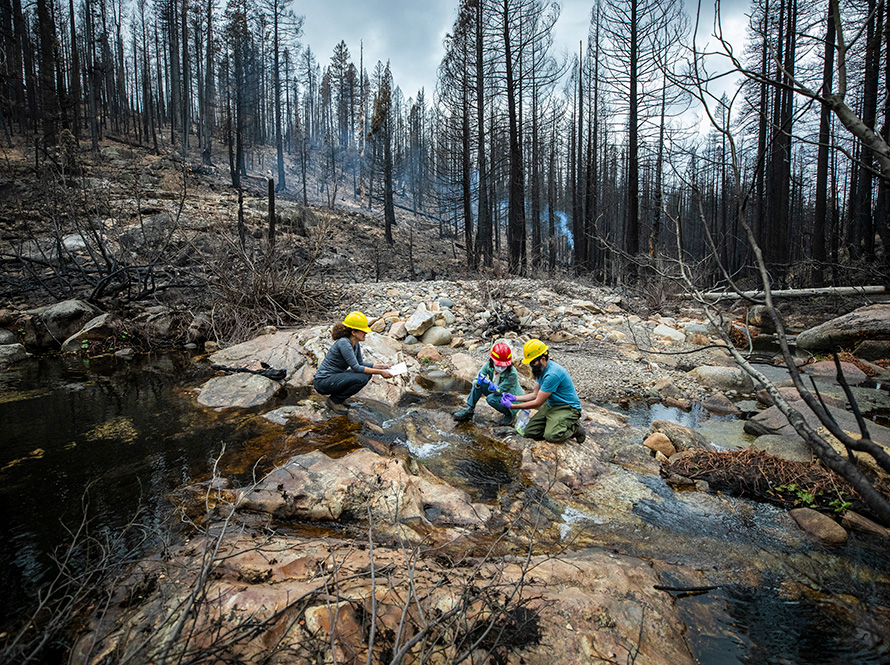
Devastating wildfires have become far too common in the United States, leading to degradation of vegetation, land stability, and water and air quality. CESD scientists are working to better understand and predict wildfire frequency and severity, and exploring the interactions between wildfire, the environment, and climate.
These experts are exploring how large and increasingly intense wildfires impact forest composition, water quality, and the vegetation and soils that help store carbon. CESD scientists are also spearheading efforts to understand how ecosystem composition shifts in tandem with fire, leading studies that explore the connections between wildfire and hydrology, and investigating how climate and wildfires could impact or amplify one another. With new observation methods and computational abilities, this research aims to improve the ability of models to convey wildfires and their impacts from local to global scales, and inform public and environmental health management following wildfire events.












Recent Publications

Devastating wildfires have become far too routine in the American West. Our experts are developing insights and tools needed to accurately predict under what conditions and to what extent future wildfires will occur, and predicting how wildfires might change as infrastructure expands with population growth, and forests evolve with extreme heat and drought.